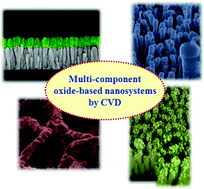Applications of halogen bonding
l
In this HOT Highlight, Franck Meyer and Philippe Dubois discuss the emergence of halogen bonding over the last decade for crystal engineering of supramolecular complexes. Whilst hydrogen bonding has received a great deal of interest in this respect, very little work has focused on halogen bonding until now. The first applications to highly functional materials are presented. Other recent applications have also included solution phase recognition (catalysis, anion sensing and resolution) and macromolecular organizations (porous, polymeric and hybrid systems). Thus, the potential cooperation between weak
non-covalent bonds opens the door for new applications in materials science and synthetic chemistry.
Read more for FREE at:
Halogen bonding at work: recent applications in synthetic chemistry and materials science
Franck Meyer and Philippe Dubois
CrystEngComm, 2012, Advance Article
DOI: 10.1039/C2CE26150B
Also of interest:
Controlled room temperature ROP of L-lactide by ICl3: a simple halogen-bonding catalyst
Olivier Coulembier, Franck Meyer and Philippe Dubois
Polym. Chem., 2010,1, 434-437
DOI: 10.1039/C0PY00013B, Communication
Mesogenic, trimeric, halogen-bonded complexes from alkoxystilbazoles and 1,4-diiodotetrafluorobenzene Duncan W. Bruce, Pierangelo Metrangolo, Franck Meyer, Carsten Präsang, Giuseppe Resnati, Giancarlo Terraneo and Adrian C. Whitwood
New J. Chem., 2008, 32, 477-482
DOI: 10.1039/B709107A, Paper
Solid state synthesis under supramolecular control of a 2D heterotetratopic self-complementary tecton tailored to halogen bonding
Giovanni Marras, Pierangelo Metrangolo, Franck Meyer, Tullio Pilati, Giuseppe Resnati and Ashwani Vij
New J. Chem., 2006, 30, 1397-1402
DOI: 10.1039/B605958A, Paper
Crystal engineering of brominated tectons: N-methyl-3,5-dibromo-pyridinium iodide gives particularly short C–BrI halogen bonding
Thomas A. Logothetis, Franck Meyer, Pierangelo Metrangolo, Tullio Pilati and Giuseppe Resnati
New J. Chem., 2004, 28, 760-763
DOI: 10.1039/B401421A, Paper


![GA[11] Applications of halogen bonding](https://blogs.rsc.org/ce/files/2012/09/GA11.gif)










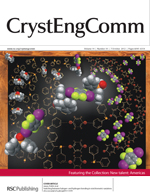
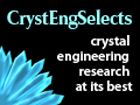


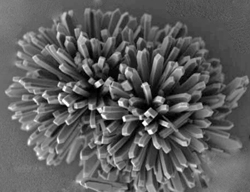

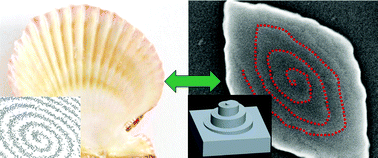 Nacre
Nacre![GA[6] Ethambutol dibenzoate trimorphs](https://blogs.rsc.org/ce/files/2012/08/GA6.gif)

